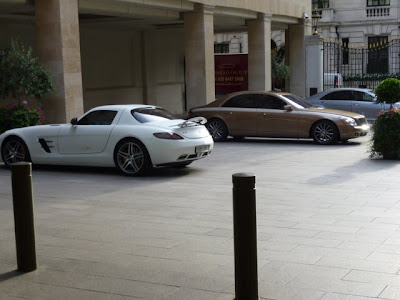The jet airliner, internet, and all those other time and distance-collapsing innovations of the past 50 or 60 years might have contributed to a decline of regionalism in painting. That is, if indeed there has been such a decline; I haven't researched this and am relying on impressions as the assertion's basis.
Here in the often dreary, drizzly northwest corner of America we once upon a time had a "regional school" of painting. Because Life magazine said so.
Readers under age 50 might not realize that so-called "mass-market" magazines once were an extremely important part of the shared culture America once had. Publications such as Saturday Evening Post, Collier's, Time and Life had huge paid subscriptions in a country with half its present population. Life was a fat, glossy magazine with an emphasis on photographic essays. While a recurring feature was a bit of fluff titled "Life Goes to a Party," it also contained articles keyed to the prevailing "middlebrow" cultural uplift ethos.
So the issue of 28 September 1953 had a full color feature on four painters working in the Puget Sound area (much of the magazine's illustrations were in black and white then, so color was a semi-big deal). The title of the piece characterized them as "mystics" because of their style, subjects and the local grayed-out climate. Naturally we locals were pleased with this important national publicity, Seattle being pretty much a backwater in those days unless one was in the aircraft-building trade.
The four artists featured by Life were Mark Tobey (1890-1976), Morris Graves (1910-2001), Kenneth Callahan (1905-86) and Guy Anderson (1906-98). A Wikipedia entry on "Northwest School" painting is here. Below are examples of their work:
Broadway 1936
This is an example of Tobey's signature "white writing" style. Here one can find recognizable images buried in the line overlay.
Patterns of Conflict - 1944
A later Tobey where the lines become virtually the entire subject-matter. Paintings such as this suggest to some that he influenced the later drip-paintings of Jackson Pollock.
This painting of a bird is representative of Graves' work which featured birds and other objects painted in a wispy style suggestive of Chinese painting with Tobeyesque overtones.
Callahan would often create a swirly soup within which he'd add sketchy human or animal figures.
Anderson's work was bolder and heavier than the others, as well as more purely abstract, as this example indicates. The "mystic" label sets uneasily upon him.
If I had a research budget, I'd put some effort into trying to determine how that Life article originated; for now, I'll speculate. And my speculation centers on the Seattle Art Museum which at the time was the creation and creature of geologist Richard E. Fuller. (A memoir about Richard Fuller by Thelma Lehmann is here.) For many years Kenneth Callahan was on the museum's staff to handle publicity. Callahan also wrote columns about art for the Seattle Times, the leading local newspaper. Given Callahan's public relations skills and Fuller's influence in the museum world, it is easy to imagine that one or both tipped Life editors to the idea for the article. However, this note states that the tip came from Seattle art dealer Zoë Dusanne (1884-1972). (I, along with some other art students, visited her home-cum-gallery not long before it was eradicated by construction of Interstate 5 through Seattle.)
So where do Tobey, Graves and Anderson come into the picture? They were friends of Callahan. Callahan had a wife, but the others never married and, as is suggested in this book, were at various times dear and extremely intimate friends of one another. Perhaps this explains why the not-so-mystical Anderson was grouped with the others.
All four artists matured during the period 1920-40, a time that interests me because it was a time of reflection after the onslaught of movements of the early 20th century and before Abstract Expressionism became for a while the dominant modernist school. In a nutshell, most artists were trying to figure out how to accommodate to modernism while the few true modernists were trying to figure out what next step modernism should take. This is why abstract and representational features intermingle in many works by Tobey, Graves and Callahan.
My rating of these painters? I think Graves was the best of the lot because he strayed the least from representation while creating interesting images. Tobey was the prime innovator. I place much less value on innovation and "creativity" than other observers, but feel Tobey should be given his due. Callahan's work tends to be forgettable as does Anderson's.
I should add that Guy Anderson was my art "instructor" once upon a time. In retrospect, it was probably an example of Richard Fuller helping out an artist in need. What happened was that, during my senior year in high school, the Seattle Art Museum held an all-city art class wherein each of the eight public high schools sent two students to it one afternoon a week. For a reason I do not know, I was one of Roosevelt High's representatives. There actually wasn't much or any "instruction" from Anderson. He'd mostly sit there in his turtle-neck sweater and tweed jacket and puff on a pipe while we students did whatever puttering around we did with our art supplies. The main things I got from the class were a crush on one of the girls and a date for my senior prom with another.






















































